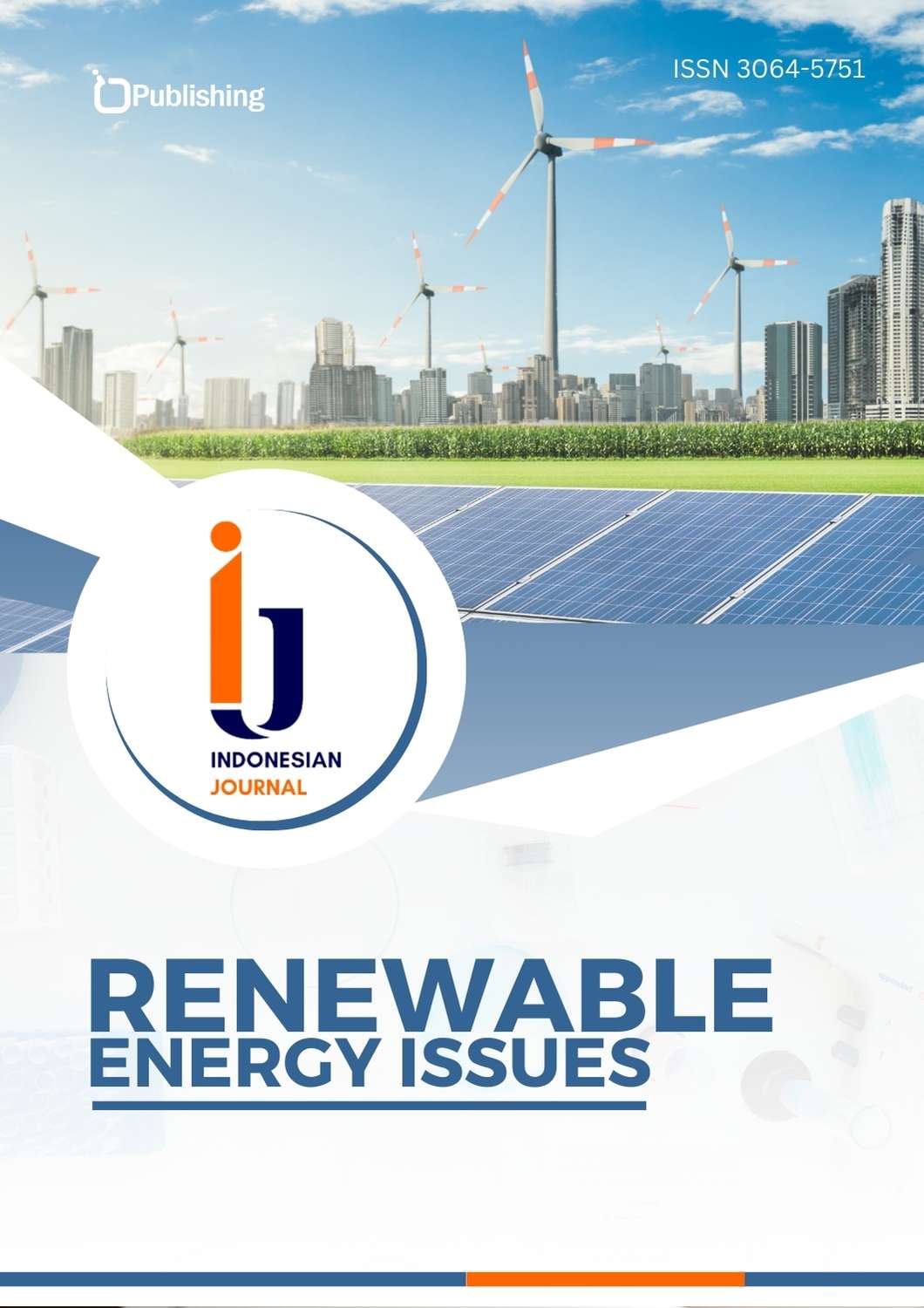Design Thinking Expands Sterilisation of Solar-Powered Medical Devices in Indonesian Private Primary Healthcare
DOI:
https://doi.org/10.47134/rei.v2i1.10Keywords:
Medical Device Sterilisation, Solar Energy, Design Thinking, Primary Healthcare, IndonesiaAbstract
Indonesia faces a challenge of conventional energy scarcity in the future. The primary issue with the first-level healthcare industry is its limited use of solar energy, particularly for sterilising medical devices, which is crucial in remote areas to ensure their safety and effectiveness. The research aims to analyse the expansion of solar energy utilisation in the sterilisation of medical devices. The research employs a qualitative method with a grounded theory approach, collecting data through interviews and literature reviews. The research location is at the Rizki Sehat Clinic, Serang Regency, Indonesia. The design thinking approach enables the expansion of solar-powered medical sterilisers in private first-level health facilities, overcoming the limitations of electric and manual sterilisers, which have often been suboptimal due to electricity supply constraints and conventional energy operating costs. This innovation has proven to be efficient and environmentally friendly. It can be implemented gradually through a process that involves identifying needs, designing prototypes, conducting demonstrations, providing training, and expanding to additional facilities. The theoretical implications enrich the literature on the adoption of renewable energy technologies in healthcare. Practically, this study provides systematic implementation guidelines for health facility managers in improving the quality and sustainability of solar-powered medical device sterilisation services. The limitations of research on the scope of a single object, as well as conceptual studies, have not thoroughly evaluated economic aspects across various regions. The subsequent research was conducted in various regions with distinct characteristics, utilising a cost-benefit analysis that incorporated solar power and a digital monitoring system
References
Alisjahbana, A. S., & Murniningtyas, E. (2018). Tujuan Pembangunan Berkelanjutan Di Indonesia: Konsep Target Dan Strategi Implementasi. Universitas Padjadjaran. https://doi.org/10.18356/9789210010788
Ani, V. A. (2021). Powering primary healthcare centres with clean energy sources. Renewable Energy and Environmental Sustainability, 6(7), 1–17. https://doi.org/10.1051/rees/2020009
Arvidsson, R., Svanström, M., Harvey, S., & Sandén, B. A. (2021). Life-cycle impact assessment methods for physical energy scarcity: considerations and suggestions. International Journal of Life Cycle Assessment, 26(12), 2339–2354. https://doi.org/10.1007/s11367-021-02004-x
Bayu, H., & Windarta, J. (2021). Tinjauan Kebijakan dan Regulasi Pengembangan PLTS di Indonesia. Jurnal Energi Baru Dan Terbarukan, 2(3), 123–132. https://doi.org/10.14710/jebt.2021.10043
Benedettini, O. (2022). Green Servitization in the Single-Use Medical Device Industry: How Device OEMs Create Supply Chain Circularity through Reprocessing. Sustainability (Switzerland), 14(12670), 1–21. https://doi.org/10.3390/su141912670
BPS. (2023). Neraca Energi Indonesia 2018–2022 (Vol. 25). www.bps.go.id
Capellán-Pérez, I., et al. (2020). MEDEAS: A new modeling framework integrating global biophysical and socioeconomic constraints. Energy and Environmental Science, 13(3), 986–1017. https://doi.org/10.1039/c9ee02627d
Castiblanco Jimenez, I. A., et al. (2021). Design thinking as a framework for the design of a sustainable waste sterilization system. Electronics (Switzerland), 10(2665), 1–25. https://doi.org/10.3390/electronics10212665
Corio, D., et al. (2023). Energi Indonesia: Masalah dan Potensi Pembangkit Listrik dalam Mewujudkan Kemandirian Energi. Yayasan Kita Menulis.
Creswell, J. W., & Clark, P. V. L. (2011). Designing and Conducting Mixed Methods Research. Sage Publications.
ECM. (2025). Climate Resilience And Powering Healthcare In The Global South.
Faisal. (2021). Urgensi Pengaturan Pengembangan Energi Terbarukan. Ensiklopedia Social Review, 3(1), 18–24. https://doi.org/10.33559/esr.v3i1.675
Garvey, M. (2024). Medical Device-Associated Healthcare Infections. International Journal of Molecular Sciences, 25(1). https://doi.org/10.3390/ijms25010201
Haig, B. (2007). Grounded theory. In Encyclopedia of Measurement and Statistics (pp. 419–421). SAGE Publications. https://doi.org/10.1080/17439760.2016.1262614
HBS. (2018). Improving Access to Reliable Energy for Primary Healthcare Centres in Nigeria. https://ng.boell.org/en/2019/01/08/improving-access-reliable-energy-primary-healthcare-centres-nigeria
Hendrayansyah. (2024). Pengembangan Potensi Energi Hidro Guna Meningkatkan Perekonomian Nasional (pp. 1–93). Lembaga Ketahanan Nasional RI.
IEA. (2025). Global Energy Review 2020. https://doi.org/10.1787/a60abbf2-en
IESR. (2024). Indonesia Energy Transition Outlook 2015.
Izuka, U., et al. (2023). Powering Rural Healthcare With Sustainable Energy. Engineering Science & Technology Journal, 4(4), 190–208. https://doi.org/10.51594/estj.v4i4.582
Jati, S. A. K. (2024). Dinamika Hukum Dalam Pengembangan Energi Baru Terbarukan. Jurnal Legal Reasoning, 6(2), 89–101. https://doi.org/10.35814/jlr.v6i2.6023
Kharisma, A., Pinandita, S., & Jayanti, A. E. (2024). Literature Review: Kajian Potensi Energi Surya. Jurnal Energi Baru Dan Terbarukan, 5(2), 145–154. https://doi.org/10.14710/jebt.2024.23956
Khogali, A., et al. (2022). Building power-ful health systems. Psychology, Health and Medicine, 27(sup1), 124–137. https://doi.org/10.1080/13548506.2022.2109049
Kishore, T. S., Kumar, P. U., & Ippili, V. (2025). Review of global sustainable solar energy policies. Innovation and Green Development, 4(2), 100224. https://doi.org/10.1016/j.igd.2025.100224
Moreira, J., et al. (2021). Design Thinking para a Inovação Social. In Coleção Convergências Research Books (Issue 2, pp. 169–176). Edições IPCB.
Muhayat. (2025). Wawancara Petugas. Klinik Rizki Sehat.
Murray, R., Grice, J. J., & Mulgan, G. (2010). The Open Book of Social Innovation. www.socialinnovator.info
Pakravan, M. H., & Johnson, A. C. (2021). Electrification planning for healthcare. ISPRS International Journal of Geo-Information, 10(11), 1–20. https://doi.org/10.3390/ijgi10110750
Pertamina. (2021). Annual Report PT Pertamina Bina Medika 2022.
PLN. (2021). Optimalisasi Strategi Mewujudkan Transisi Energi Berkelanjutan. https://web.pln.co.id/statics/uploads/2023/02/SR-PLN-2021-Low-revisi-0111.pdf
Pressman, A. (2019). Design Thinking: A Guide to Creative Problem Solving for Everyone. Routledge.
Rahmawati, et al. (2023). Desain Prototipe PLTS Untuk Mesin Sterilisasi. Jurnal Rekayasa Elektro Sriwijaya, 4(2), 73–82. https://doi.org/10.36706/jres.v4i2.85
Raman, R., et al. (2024). Research contribution of bibliometric studies. Discover Sustainability, 5(7), 1–39. https://doi.org/10.1007/s43621-024-00182-w
Rohlèn, S., & Skilbred, M. (2016). Strategy for designing solar-powered UPS systems in hospitals in Eastern Africa. Chalmers University of Technology. http://publications.lib.chalmers.se/records/fulltext/243122/243122.pdf
Said, M., et al. (2020). Rekayasa Oven Surya Untuk Sterilisasi. Seminar Nasional AVoER XII 2, November, 919–924. https://ejournal.ft.unsri.ac.id/index.php/avoer/article/view/308
Saputra, A. (2025). Wawancara Pemilik (p. 1). Klinik Rizki Sehat.
Sharma, L., et al. (2024). Advancing Solar Energy for Primary Healthcare. Cureus, 16(1), 1–7. https://doi.org/10.7759/cureus.51571
Sigalingging, T. M., & Ananda, Y. (2021). Rancang Bangun Alat Suplai Energi. Jurnal Simetri Rekayasa, 3(2), 178–186. https://jurnal.harapan.ac.id/index.php/JSR/article/view/520
Soto, E. A., et al. (2022). Solar Energy Implementation for Healthcare. Energies, 15(22). https://doi.org/10.3390/en15228602
Strauss, A. L., & Corbin, J. (1998). Basics of Qualitative Research (2nd ed.). Sage Publications.
Syed, F., et al. (2021). Design Thinking for Social Innovation. SSRN Electronic Journal. https://doi.org/10.2139/ssrn.3916835
UI. (2022). Pionir Kemajuan: Pendekatan Kolaboratif Universitas Indonesia.
Ukoba, K., et al. (2024). Adaptation of solar energy in the Global South. Heliyon, 10(7), e28009. https://doi.org/10.1016/j.heliyon.2024.e28009
WHO, The World Bank, IRENA, & Sustainable Energy for All. (2023). Energizing health: accelerating electricity access in health-care facilities. World Health Organization.
Yasmin, S. Y., et al. (2024). Energi Surya Sebagai Solusi Dalam Peningkatan Efisiensi Energi. Venus: Jurnal Publikasi Rumpun Ilmu Teknik, 2(2), 108–118. https://doi.org/10.61132/venus.v2i2.252
Downloads
Published
How to Cite
Issue
Section
License
Copyright (c) 2025 Haudh Al Maa'uun, Esa Iasyabillah Rosyada; Adinda Zahra Raisya Kamil; Arif Rohmansyah Huluq; Amira Khoirunnisa; Siti Zahra Khoirunnisa, Faiz Jihad Al Baihaqi

This work is licensed under a Creative Commons Attribution 4.0 International License.










